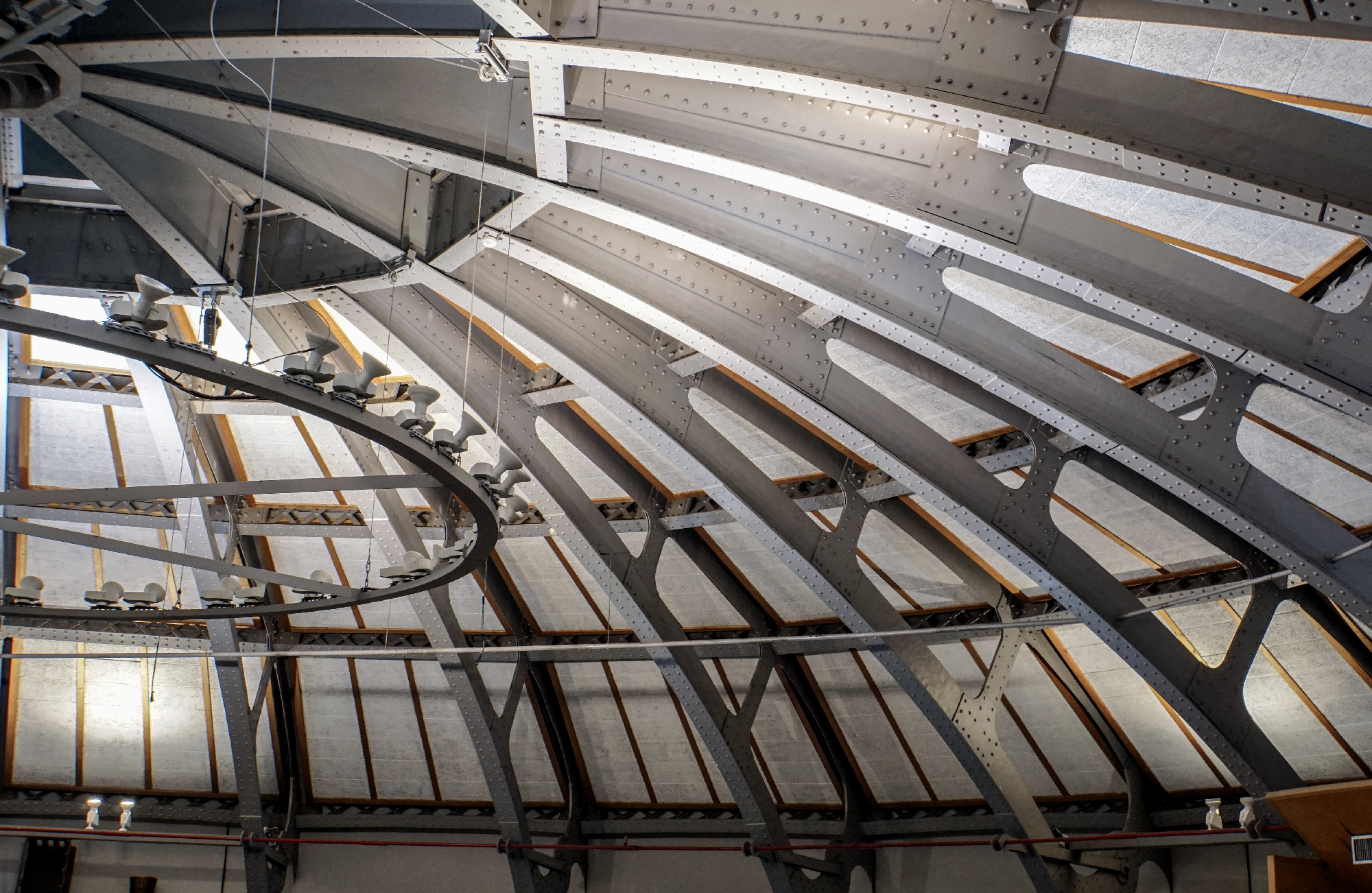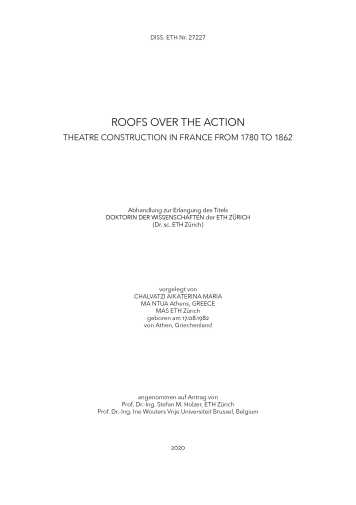K. Chalvatzi: Theatre Construction in France from 1780 to 1862
Dissertation project by Katerina Chalvatzi on the subject "Roofs Over the Action: Theatre Construction in France from 1780 to 1862"
Roofs Over the Action: Theatre Construction in France from 1780 to 1862
In France, construction of theatres rapidly evolved in the 18th and early 19th century in response to the growing demand for safe and convenient performance halls. Paris in particular, became a significant centre for theatrical activity during the 18th century. Theatres became a field of experimentation with innovative roof designs and construction methods, in order to respond to the growing spans and loads of the roofs as well as the complex requirements of the machinery. At the same time, the extremely high risk of fire intensified the need for fireproof constructions.
The development of science and technology during that time facilitated the conception of innovative construction systems, including the application of iron in building structures. Iron was combined with ceramic tiles or pots for the construction of fireproof flooring. The idea expanded to iron roof trusses with vaulted fillings made of hollow pots, a system that was first applied on the roof of theatres in Paris at the end of the 18th century. This construction method was revived in the beginning of the 19th century, when numerous theatres were erected implementing it from 1827 until 1840.
This research traces the evolution of theatre roofs with a focus on the application of iron. Archival and published sources have been combined with on-site visits of historical theatres, in order to observe and document both timber and iron structures. This work covers a period from 1770 until 1862 and showcases timber theatre roofs from the late 18th and early 19th century and iron roofs from 1790 until 1862. The early implementation of iron is presented and contextualized through the selected examples. part from the recognized architectural value of historical theatres, this study aims to highlight their structural significance in construction history. Moreover, it creates a link between the structures and significant construction techniques, providing motivation for further study.
Katerina Chalvatzi obtained her Diploma in Architectural Engineering from the National Technical University of Athens and subsequently gained work experience in architectural offices in Athens. In 2011 she graduated from the MAS in Conservation Science at the ETH Zurich. During her studies, she took part in various academic projects of the NTUA (2003-2005) and the University of Thessaly (2010), mainly concerning construction history in excavations. 2011-2014 she worked as an architect at Hotz+Partner Architektur und Ausführung in Wädenswil, Zürich, followed by an assistantship at the Institute for Technology in Architecture. In 2016 she started her research for a PHD at the Institute of Construction History and Preservation ETH Zürich, under the supervision of Prof. Dr. Stefan Holzer. She successfully completed her doctorate at ETH Zurich in 2021.
- Chalvatzi, K.: Early iron in Theatre Construction: the Théâtre du Palais-Royal in Paris. In: Campbell, J., et al. (Eds.): Iron, Steel and Building: Studies in the History of Construction. Proceedings of the Seventh Conference of the Construction History Society. Cambridge: Construction History Society, 2020, 31–44.
- Chalvatzi, A.; Holzer, S. M.: Iron roof structures by Bosshard & Cie: Case studies in Switzerland. In: Wouters, I., et al. (Eds.): Building Knowledge, Constructing Histories: Proceedings of the 6th International Congress on Construction History, 2018, Brussels, Belgium. London: CRC Press, 2018, Vol. I, 441–448. (Research Collection)
- Chalvatzi, A.: Theatre Construction in 18th century France: The Opera of the Palais-Royal in Paris and its impact on theatre construction. In: Campbell, J., et al. (Eds.): Studies in the History of Services and Construction, Proceedings of the Fifth Conference of the Construction History Society, Cambridge 2018. Cambridge: University Press, 2018, 315-326. (Research Collection)

